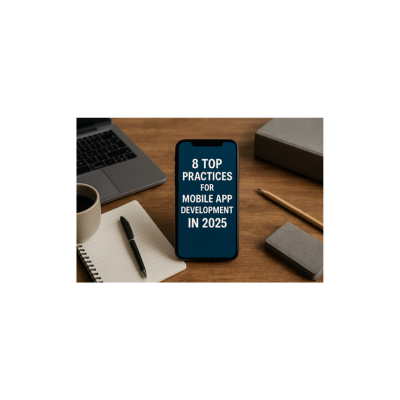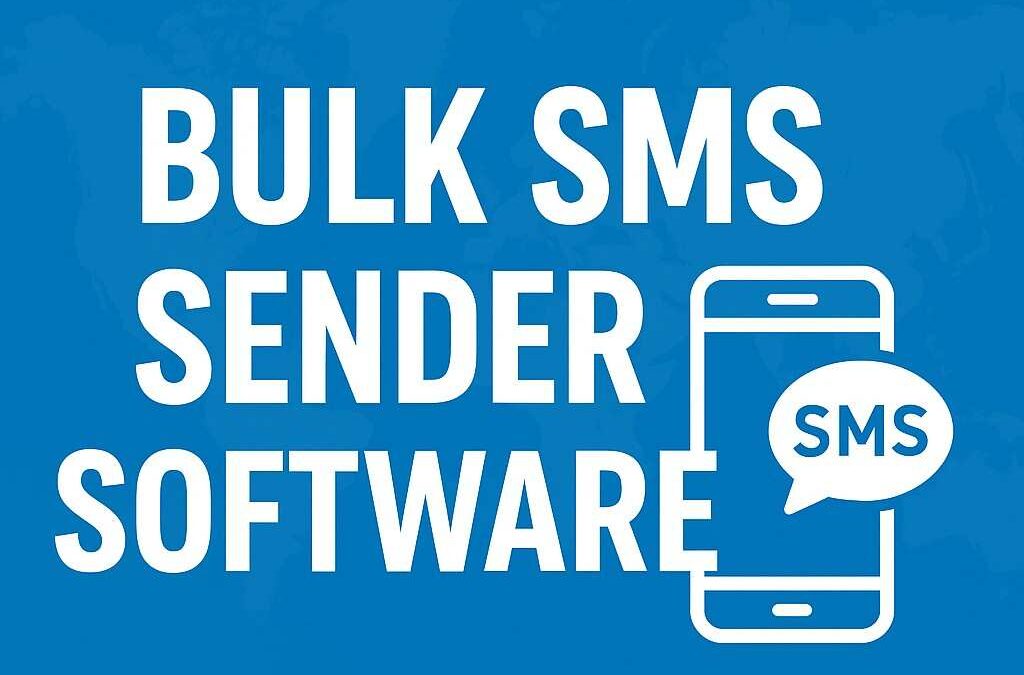The mobile app landscape is in a perpetual state of evolution, driven by rapid technological advancements and ever-increasing user expectations. As we navigate 2025, app development is no longer just about functionality; it’s about delivering intelligent, secure, hyper-personalized, and seamlessly connected experiences. For businesses and individual Mobile App Developers New Jersey or elsewhere, staying abreast of the leading practices is paramount to building applications that stand out, attract users, and, critically, retain them.
Table of Contents
- AI and Machine Learning Integration for Intelligent Experiences
- Security-First Development (DevSecOps)
- Hyper-Personalization and Adaptive UX
- Optimized for 5G and Advanced Connectivity
- Cross-Platform Efficiency with Native-like Performance
- Robust Backend and API Strategy
- Continuous Testing and Quality Assurance (QA)
- Strategic Post-Launch Engagement & Maintenance
Here are 8 top practices that define excellence in mobile app development in 2025:
1. AI and Machine Learning Integration for Intelligent Experiences
Artificial Intelligence (AI) and Machine Learning (ML) are no longer buzzwords; they are foundational elements for modern mobile applications. Their integration transforms apps from mere tools into intelligent companions that learn and adapt.
- Why it’s a top practice in 2025: Users expect proactive assistance and highly relevant interactions. AI and ML enable:
- Hyper-Personalization: Analyzing user behavior, preferences, and context to deliver tailored content, recommendations, and services. Think of streaming services suggesting shows you’ll love or e-commerce apps predicting your next purchase.
- Predictive Analytics: Forecasting user needs, potential churn, or optimal times for engagement, allowing for proactive interventions.
- Enhanced Automation: Powering intelligent chatbots, voice assistants, and in-app automation that streamline tasks and customer support.
- Advanced Features: Enabling capabilities like real-time image recognition, natural language processing for voice commands, and smart search functionalities.
- Implementation Focus: Leverage AI/ML for features that genuinely add value, such as optimizing content delivery, personalizing user flows, or enhancing in-app search. Use on-device AI for speed and privacy where possible, or cloud-based AI for more complex computations.
2. Security-First Development (DevSecOps)
In an era of increasing cyber threats and stringent data privacy regulations, security must be woven into every fabric of the app development lifecycle, not just added as an afterthought.
- Why it’s a top practice in 2025: Data breaches can devastate a brand’s reputation and lead to significant financial penalties. A security-first approach means:
- Secure Coding Practices: Implementing secure coding standards from the outset to minimize vulnerabilities.
- Data Encryption: Encrypting sensitive data both in transit and at rest to protect user information.
- Robust Authentication: Implementing multi-factor authentication (MFA) and biometric login (face ID, fingerprint) for sensitive access.
- Regular Security Audits & Penetration Testing: Proactively identifying and addressing weaknesses throughout the development process and after deployment.
- Secure API Integrations: Ensuring that all connections to third-party services and backend systems are secure and properly authenticated.
- Implementation Focus: Adopt a DevSecOps methodology, integrating security checks and automated testing into continuous integration/continuous deployment (CI/CD) pipelines. Educate your development team on the latest security threats and best practices to ensure they are building resilience into the app from day one.
3. Hyper-Personalization and Adaptive UX
Beyond basic personalization, hyper-personalization leverages deep user insights to create truly unique and dynamically adapting user experiences (UX).
- Why it’s a top practice in 2025: Generic experiences no longer cut it. Users crave apps that feel like they were made just for them. Adaptive UX means the app interface and content subtly change based on individual behavior, preferences, location, time of day, and even mood.
- Implementation Focus:
- Contextual Awareness: Utilizing device sensors (location, time), user input, and historical data to provide relevant content and features at the right moment.
- Dynamic Interfaces: Allowing UI elements to adapt or reconfigure based on user interactions, making the most frequently used features more prominent.
- Personalized Content Streams: Curating feeds, notifications, and recommendations based on explicit and implicit user data.
- User Control: Providing users with granular control over their personalization settings to build trust and empower them.
4. Optimized for 5G and Advanced Connectivity
With 5G becoming more widespread, apps can leverage unprecedented speeds, lower latency, and greater bandwidth, opening up new possibilities for rich, real-time experiences.
- Why it’s a top practice in 2025: Apps that are optimized for 5G can offer:
- Faster Loading Times: Instant access to content and features, reducing user frustration.
- Enhanced Media Streaming: Smooth, high-resolution video and audio streaming without buffering.
- Real-time Interactions: Seamless video calls, collaborative tools, and gaming experiences with minimal delay.
- Edge Computing Capabilities: Processing data closer to the user for even faster responses and reduced reliance on distant servers.
- IoT Integration: More reliable and faster communication with connected devices.
- Implementation Focus: Design for efficient data transfer, even if 5G isn’t universally available. Prioritize optimizing image and video assets. Consider features that benefit from real-time data exchange, such as live sports updates, augmented reality applications, or instant communication.
5. Cross-Platform Efficiency with Native-like Performance
The debate between native and cross-platform development continues, but 2025 sees cross-platform frameworks delivering increasingly native-like performance and experiences.
- Why it’s a top practice in 2025: For many businesses, especially startups, reaching both iOS and Android users efficiently is crucial. Cross-platform frameworks like Flutter and React Native offer:
- Single Codebase: Significant cost and time savings by developing one app for multiple platforms.
- Faster Time-to-Market: Accelerating deployment to both major app stores.
- Consistent UI/UX: Maintaining a uniform look and feel across platforms, which can reinforce brand identity.
- Near-Native Performance: Modern frameworks provide tools to achieve performance comparable to native apps for most use cases.
- Implementation Focus: Choose the framework that best suits your app’s complexity, budget, and development team’s expertise. While native development still holds an edge for highly complex, resource-intensive apps or those requiring deep hardware integration, cross-platform solutions are becoming the go-to for many robust applications.
6. Robust Backend and API Strategy
The mobile app’s front-end is only as strong as its backend. A well-designed, scalable, and secure backend infrastructure is essential for reliable performance and data management.
- Why it’s a top practice in 2025: As apps grow in complexity and user base, their backend needs to handle increasing data, user requests, and integrations seamlessly.
- Scalability: Designing the backend to easily scale up or down based on user demand, preventing crashes and slow performance during peak times.
- Efficient APIs: Crafting well-documented, secure, and efficient Application Programming Interfaces (APIs) for smooth communication between the app and external services or databases.
- Cloud-Native Architectures: Utilizing cloud services (AWS, Azure, Google Cloud) for their scalability, reliability, and cost-effectiveness.
- Microservices Architecture: Breaking down the backend into smaller, independent services to improve agility, maintainability, and resilience.
- Implementation Focus: Prioritize a modular and flexible backend that can evolve with your app. Secure your APIs rigorously to prevent unauthorized access and data breaches. For specialized projects, consider partnering with Mobile App Developers New Jersey who have strong backend engineering capabilities.
7. Continuous Testing and Quality Assurance (QA)
Releasing a bug-free, high-performing app is non-negotiable. Modern development emphasizes continuous testing throughout the entire development lifecycle, not just at the end.
- Why it’s a top practice in 2025: User tolerance for bugs is extremely low. Comprehensive QA ensures a high-quality app that performs reliably across various devices, operating systems, and network conditions.
- Automated Testing: Implementing automated unit, integration, and UI tests to catch regressions and common errors quickly.
- Manual Testing: Conducting thorough manual testing for usability, edge cases, and unexpected user behaviors.
- Performance Testing: Stress-testing the app under various loads to ensure stability and responsiveness.
- Security Testing: Integrating security tests at every stage (as mentioned in point 2).
- User Acceptance Testing (UAT): Involving actual end-users in the final testing phase before launch.
- Implementation Focus: Embed QA into every sprint of an Agile development process. Utilize robust testing frameworks and tools. Prioritize feedback loops from testing into the development cycle to iterate quickly on improvements.
8. Strategic Post-Launch Engagement & Maintenance
The launch of an app is just the beginning. Sustained success in 2025 relies heavily on continuous engagement, monitoring, and regular updates.
- Why it’s a top practice in 2025: User retention is as critical as acquisition. Apps need to remain fresh, relevant, and secure to keep users coming back.
- Analytics and Monitoring: Continuously track user behavior, app performance, and crash reports using analytics tools (e.g., Firebase Analytics, Google Analytics for Firebase).
- Iterative Updates: Based on analytics and user feedback, plan and roll out regular updates that include bug fixes, performance enhancements, and new features.
- User Feedback Channels: Provide easy in-app mechanisms for users to submit feedback, report bugs, or suggest features.
- Push Notification Strategy: Implement a well-thought-out, personalized push notification strategy to re-engage dormant users and inform active users about new content or features.
- OS Compatibility: Ensure your app remains compatible with the latest operating system updates from Apple and Google.
- Implementation Focus: Allocate resources for ongoing maintenance and support. Create a roadmap for future features based on user insights and market trends. For many businesses, partnering with dedicated Mobile App Developers New Jersey for ongoing support ensures their app remains competitive and provides continuous value.
Conclusion
The mobile app development landscape in 2025 is characterized by intelligence, security, seamless performance, and deep user understanding. By embracing these 8 top practices—from integrating AI and prioritizing security to optimizing for advanced connectivity and ensuring continuous post-launch engagement—developers and businesses can create mobile applications that not only meet but exceed user expectations, driving long-term success and cementing their place in the digital future.







0 Comments